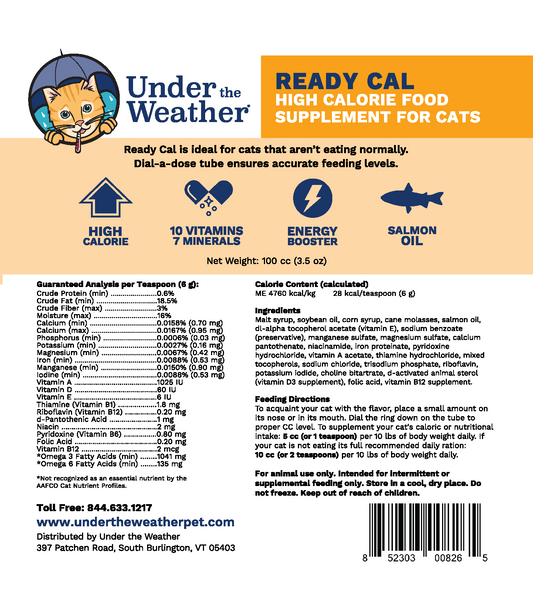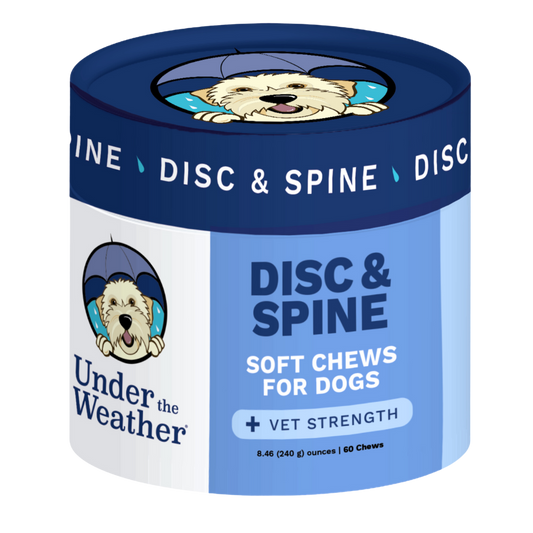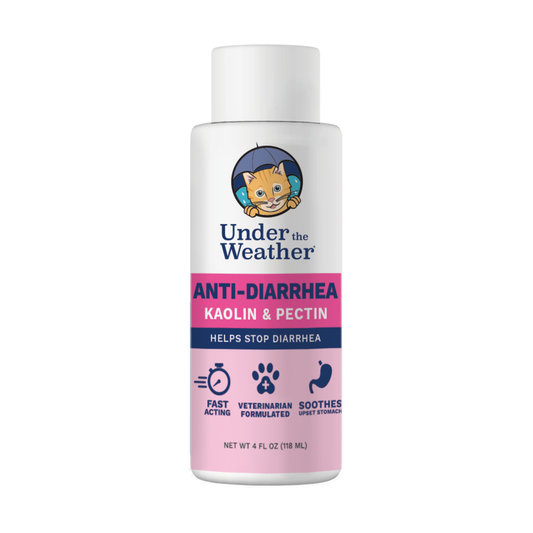In recent years, there has been a growing interest in offering cats a variety of foods beyond their traditional diet. As cat owners become more conscious of their own food choices, they often wonder if these same foods are safe for their feline companions. One food that frequently comes up in these discussions is lettuce. Keep reading to discover whether lettuce is safe for cats to eat, the nutritional value it provides, how to introduce it into your cat's diet safely, and what the nutritional needs of cats are.
Understanding Feline Nutrition
Before we delve into the safety of lettuce for cats, it's important to have a basic understanding of feline nutrition. Cats are obligate carnivores, meaning they require a diet primarily composed of animal-based proteins. These proteins provide essential amino acids that cats cannot produce on their own.
While cats have specific dietary needs, they can benefit from a small amount of plant-based foods in their diet. These foods can provide additional nutrients and fiber that support a cat's overall health.
Now, let's explore some fascinating details about feline nutrition. Did you know that cats have a higher protein requirement compared to many other animals? This is because they have a unique metabolism that is designed to efficiently utilize protein as their main source of energy. In fact, cats have a higher protein requirement than dogs, making it crucial to provide them with high-quality protein sources, such as meat.
Essential Nutrients for Cats
Cats require several essential nutrients for optimal health:
- Protein: Cats need high-quality protein sources, such as meat, to meet their amino acid requirements. This is essential for maintaining muscle mass, supporting growth, and promoting a healthy immune system.
- Taurine: An amino acid that is crucial for heart health and proper vision in cats. Taurine deficiency can lead to serious health issues, including heart disease and blindness.
- Fatty Acids: Omega-3 and omega-6 fatty acids are necessary for healthy skin and coat. These fatty acids also play a role in reducing inflammation and supporting brain function in cats.
- Vitamins and Minerals: Cats need a well-balanced supply of vitamins and minerals for overall health. These include vitamins A, D, E, and B-complex vitamins, as well as minerals like calcium, phosphorus, and magnesium.
It's fascinating to see how each nutrient plays a vital role in a cat's overall well-being. For example, taurine is essential for cats because they cannot produce it in sufficient amounts on their own. This amino acid is found primarily in animal tissues, emphasizing the importance of including high-quality animal-based proteins in a cat's diet.
Foods Cats Should Avoid
While many human foods are safe for cats to consume in moderation, certain foods should be avoided due to their potential toxicity:
- Onions and Garlic: These can damage a cat's red blood cells and lead to anemia. It's important to note that even small amounts of onion or garlic can be harmful to cats, so it's best to avoid them altogether.
- Chocolate and Caffeine: These can cause serious health issues, including seizures and even death in cats. Theobromine, a compound found in chocolate, is toxic to cats and can affect their cardiovascular and nervous systems.
- Grapes and Raisins: Although the exact reason is unknown, these fruits can cause kidney damage in cats. It's best to keep grapes and raisins out of your feline friend's reach to ensure their well-being.
By understanding the specific dietary needs of cats and being aware of potential food hazards, you can ensure that your furry companion receives a nutritionally balanced diet that promotes their overall health and happiness.
The Role of Vegetables in a Cat's Diet
Now that we understand the basics of feline nutrition, let's explore the role of vegetables in a cat's diet.
While cats are obligate carnivores, meaning they primarily require meat in their diet, vegetables can occasionally still play a beneficial role in providing additional nutrients and fiber. It's essential to ensure that any vegetables added to a cat's diet are safe and suitable for feline consumption.
Benefits of Vegetables for Cats
When added in appropriate amounts, vegetables can offer several benefits to a cat's diet:
- Added Nutrients: Vegetables can provide additional vitamins and minerals to complement a cat's meat-based diet.
- Fiber: Fiber from vegetables can aid in digestion and promote healthy bowel movements in cats.
- Hydration: Some vegetables, such as cucumbers and zucchini, have high water content, which can contribute to a cat's overall hydration levels.
Potential Risks of Vegetables for Cats
While vegetables can be a healthy addition to a cat's diet, it's important to be aware of potential risks:
- Allergy or Sensitivity: Some cats may have allergic reactions or sensitivities to certain vegetables, so it's crucial to monitor their response when introducing new foods.
- Indigestion: Cats have different digestive systems than humans, and certain vegetables may be difficult for them to digest.
- Urinary Health: Certain vegetables high in oxalates, such as spinach and beet greens, should be fed in moderation to prevent potential urinary issues in cats.
Lettuce and Cats: A Detailed Look
Now, let's delve even deeper into the fascinating world of lettuce and its potential impact on our beloved feline friends. Understanding the intricate relationship between cats and this leafy green vegetable can provide valuable insights into their overall well-being and dietary needs.
When exploring the nutritional content of lettuce, it becomes evident that this unassuming vegetable packs a powerful punch in terms of health benefits for both humans and cats alike. Lettuce, with its crisp texture and refreshing taste, is not only low in calories but also boasts a high water content, making it a hydrating option for our whiskered companions.
Nutritional Content of Lettuce
Lettuce is a leafy green vegetable that is low in calories and rich in water content. From a nutritional standpoint, lettuce offers:
- Vitamins: Lettuce contains vitamins A, C, and K, which are beneficial for overall health.
- Minerals: It also provides small amounts of minerals like calcium and potassium.
Furthermore, the vibrant hues of different lettuce varieties signal the presence of essential nutrients that can contribute to a cat's vitality and longevity.
Potential Health Benefits of Lettuce for Cats
Lettuce can offer some potential health benefits for cats when incorporated into their diet:
- Hydration: The high water content of lettuce can contribute to a cat's overall hydration.
- Fiber: Lettuce contains dietary fiber that can support healthy digestion in cats.
- Weight Management: Due to its low-calorie content, lettuce can be included in a weight management plan for overweight cats.
Moreover, the crunchy texture of lettuce can serve as a natural teeth-cleaning mechanism for cats, promoting dental health and reducing the risk of periodontal diseases.
Possible Side Effects of Lettuce in Cats
While lettuce can be beneficial for some cats, it's important to be cautious about potential side effects:
- Diarrhea: Introducing too much lettuce or abruptly changing a cat's diet can lead to digestive upset, including diarrhea.
- Pesticide Exposure: If you choose to offer lettuce to your cat, ensure that it is thoroughly washed to minimize potential pesticide exposure.
By being mindful of the quantity and quality of lettuce offered to cats, pet owners can ensure that their feline companions reap the nutritional benefits of this leafy green while safeguarding their digestive health and overall well-being.
How to Safely Introduce Lettuce to Your Cat's Diet
If you are considering introducing lettuce to your cat's diet, follow these steps to ensure a safe transition:
Many cat owners may wonder about the benefits of adding lettuce to their feline friend's diet. Lettuce is a low-calorie vegetable that can provide some additional hydration and fiber to your cat's meals. However, it's essential to introduce it gradually and monitor your cat's reaction to ensure it agrees with their digestive system.

Preparing Lettuce for Your Cat
Before offering lettuce to your cat, take the following precautions:
- Wash the lettuce thoroughly to remove any pesticides or contaminants.
- Remove the tough outer leaves and stems, as these can be difficult for cats to chew and digest.
- Finely chop or shred the lettuce into small, manageable pieces for your cat.
It's crucial to remember that while lettuce can be a healthy addition to your cat's diet, it should not replace their primary source of nutrition, which is meat. Cats are obligate carnivores, meaning their diet should consist mainly of animal-based proteins.
Monitoring Your Cat's Reaction to Lettuce
Once you have prepared the lettuce, follow these guidelines when offering it to your cat:
- Start with a small amount of lettuce and mix it with your cat's regular food to introduce the new taste and texture.
- Observe your cat for any signs of allergies, such as itching, vomiting, or diarrhea.
- Gradually increase the amount of lettuce if your cat tolerates it well and shows no adverse reactions.
Keep in mind that not all cats will enjoy or benefit from eating lettuce. If your cat shows disinterest or refuses to eat lettuce, do not force it. Each cat has individual preferences, and it's essential to respect your cat's choices when it comes to their diet.
When to Consult a Vet
While lettuce can be a safe addition to your cat's diet when offered in moderation, it's important to be vigilant for any signs of dietary issues. Consult your veterinarian if you notice any of the following:
Signs of Dietary Issues in Cats
- Persistent vomiting or diarrhea
- Loss of appetite
- Unexplained weight loss or gain
- Changes in litter box habits
- Lethargy or decreased energy levels
When to Seek Professional Advice
If your cat exhibits any of the above symptoms or if you have concerns about their dietary needs, it's essential to seek the guidance of a veterinarian. They can provide personalized advice based on your cat's specific health requirements.
Furthermore, it's crucial to understand that while lettuce can be a source of hydration and fiber for your feline friend, not all cats may respond well to this addition to their diet. Some cats may have sensitivities or allergies to certain vegetables, including lettuce. It's always recommended to introduce new foods slowly and monitor your cat's reactions closely to ensure they are tolerating them well.
Additionally, it's worth noting that the nutritional needs of cats can vary based on factors such as age, weight, activity level, and any underlying health conditions they may have. Therefore, consulting with a veterinarian can help tailor a diet plan that meets your cat's specific requirements and ensures they are receiving the necessary nutrients for optimal health.
Final Thoughts
Providing the best care for cats includes ensuring that they get the diet that they need to live a long and fulfilling life. Our furry friends might be tempted to enjoy lettuce but it is unlikely to provide the nutrients they need and some may respond poorly to its inclusion in their diet. When you are looking for high-quality supplements for your favorite feline, Under the Weather has an excellent array of beneficial products.












